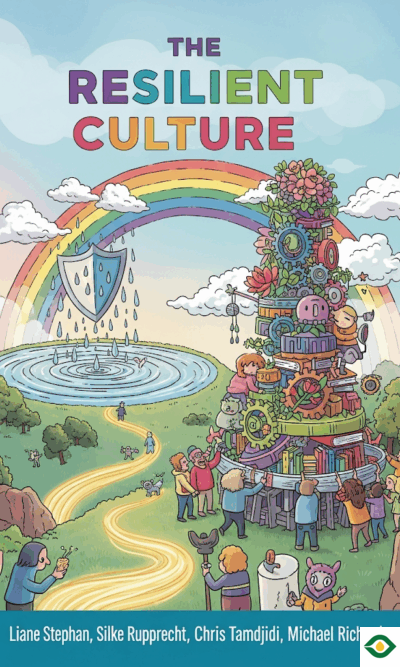Description
Optimism is often misunderstood. Many people think it means ignoring problems or pretending that life is always wonderful. But real optimism is not about denial. It is about facing reality with clear eyes and still choosing hope. Practical optimism is exactly that — a mindset that accepts life’s difficulties while also giving us tools to meet them with strength, balance, and confidence.
Practical optimism helps us grow through challenges instead of being crushed by them. It shows us that while pain, setbacks, and disappointments are unavoidable, our response to them is always within our control. This way of thinking is not something we are simply born with; it is a skill we can learn, practice, and strengthen.
At the heart of practical optimism are several guiding pillars. Each one offers simple ways to build resilience, improve mental health, and live more meaningfully.
One of the most important pillars is purpose. Many people think purpose has to be a grand mission or a lifelong career path, but that’s not true. Purpose can be found in small acts, in relationships, in hobbies, or in service to others. It is not fixed; it can grow and change as life moves forward. Practical optimism teaches us that purpose does not need outside approval. It is deeply personal, and discovering it often begins with reflection. We can ask ourselves what brings joy, what gives life meaning, and then take small steps to create more of that in daily life.
Another pillar is processing emotions. Emotions can be overwhelming when we ignore them or push them aside. Practical optimism encourages us to acknowledge our feelings, name them, and understand where they come from. By recognizing them instead of hiding them, we reduce their power over us. Once emotions are identified, we can “tame” them with calm responses, “claim” them by owning our experience, and “reframe” them by viewing situations in a more positive light.
Problem-solving is also essential. Life will never be free of obstacles, but the way we approach them makes all the difference. Practical optimism suggests reassessing problems with fresh eyes, making sure to focus on what can be controlled and letting go of what cannot. It also encourages seeking help, reminding ourselves of past strengths, and reframing situations so they do not feel as heavy. Problems may still be there, but our mindset can make them less frightening and more manageable.
Another important idea is healthy pride. Many confuse pride with arrogance, but in this context, it means self-respect. It is about knowing your worth while also accepting imperfections. With healthy pride, you can be gentle with yourself when mistakes happen. You see errors not as proof of weakness but as chances to learn and grow. Instead of being stuck in guilt or shame, you act with compassion and take steps toward improvement.
Proficiency — or belief in your own ability — is another key pillar. Confidence does not mean thinking you can do everything perfectly. It means believing you can handle challenges and learn along the way. This kind of belief is built slowly, through practice, experience, and feedback. When you trust yourself, you face tasks with enthusiasm instead of fear.
To live with practical optimism, it’s also important to be present. Many of us spend too much time trapped in the past, reliving regrets, or stuck in the future, worrying about “what ifs.” On top of that, constant comparison — especially on social media — steals joy from the present moment. Practical optimism encourages us to reclaim our attention. That may mean putting limits on technology, enjoying hobbies without screens, or creating rituals at the start and end of each day that are calm and grounding. Presence allows us to fully live instead of drifting through life distracted.
Relationships form another pillar: people. Human connection is one of the strongest buffers against stress and loneliness. Yet in modern life, many people report fewer close friendships than past generations. Practical optimism does not ask us to collect endless friends but to value the quality of the relationships we do have. By reaching out, showing empathy, and creating trust, we can build supportive networks. It also helps to understand our own patterns in relationships, such as avoiding closeness or being overly anxious, and then working toward healthier balance.
Finally, practical optimism highlights the importance of practicing healthy habits. Habits shape daily life and, over time, form our identity. Small routines like exercising, eating well, sleeping enough, and practicing mindfulness all contribute to stronger mental and physical health. When we align habits with our values and keep ourselves accountable, we move closer to the life we want to live.
An easy way to remember this is through the “4 Ms” of mental health: mastery, movement, meaningful engagement, and mindfulness. Mastery is about growth — learning new things and developing skills. Movement is about keeping the body active, which in turn improves the mind. Meaningful engagement comes from genuine connections with others and contributing to something beyond yourself. Mindfulness is about paying attention to the present moment with kindness and appreciation. Together, these four practices create a stable foundation for well-being.
Practical optimism is not about pretending life is easy. It does not ignore pain or suffering. Instead, it offers a way to face those realities with strength. It teaches us to find purpose, process emotions, solve problems, hold healthy pride, believe in our abilities, stay present, build strong connections, and commit to healthy habits.
With this mindset, setbacks become lessons. Challenges become opportunities to grow. Even small steps — like pausing to breathe, reaching out to a friend, or replacing worry with action — can create lasting change.
In the end, practical optimism is about living with hope and resilience, without closing our eyes to reality. It helps us build a life where self-care, connection, and purpose guide us forward. The journey begins with awareness and continues with consistent practice. And as we practice, we discover that optimism is not naive — it is powerful, practical, and deeply human.





